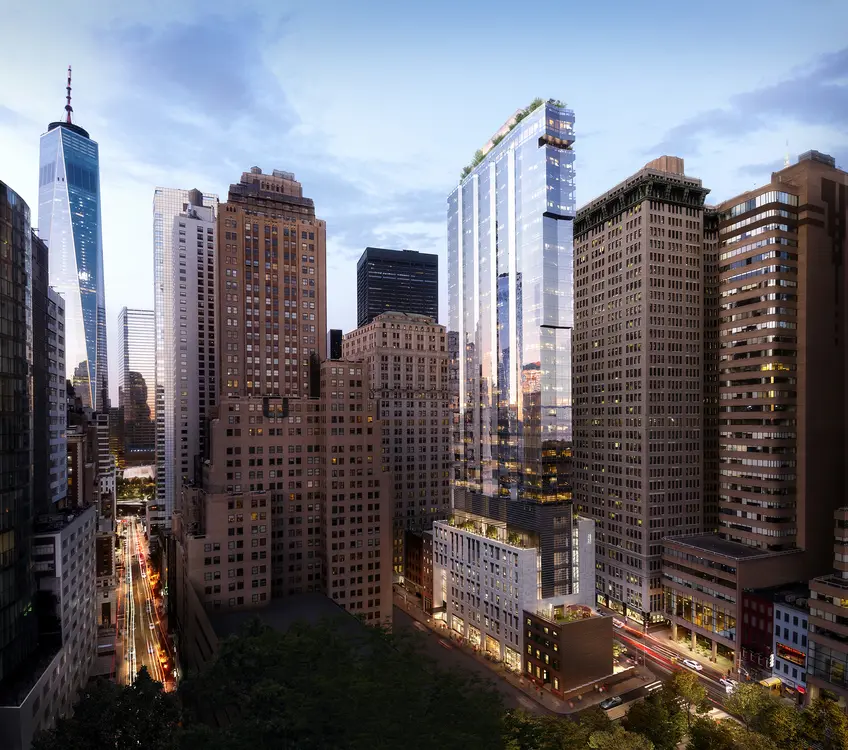 Amenity-rich buildings like 77 Greenwich (center) are on the rise. (Image via Binyan Studios)
Amenity-rich buildings like 77 Greenwich (center) are on the rise. (Image via Binyan Studios)
The old adage of the value of real estate as “location, location, location” does not hold the same weight in New York City as it used to. The no-go zones of previous decades are long gone and neighborhoods that used to be on the edge are now shiny and desirable--think Hudson Yards, Alphabet City, Downtown Brooklyn (the list goes on and on).
So, what really makes the difference for buyers? What adds value to properties? NYC residential developers have been in a “luxury amenities race” for the past decade, but how can potential buyers really value those amenities? Do buyers want and pay more money for indoor skate parks and golf simulators? Or is it the Jay Wright-designed gyms, common rooftops, and wine cellars that truly sell a home?
So, what really makes the difference for buyers? What adds value to properties? NYC residential developers have been in a “luxury amenities race” for the past decade, but how can potential buyers really value those amenities? Do buyers want and pay more money for indoor skate parks and golf simulators? Or is it the Jay Wright-designed gyms, common rooftops, and wine cellars that truly sell a home?
Extell Development has long been a leader of amenities. Their Lower East Side development One Manhattan Square boasts a mega-massive 100,000 square feet of indoor and outdoor amenities, including NYC’s largest outdoor private garden, tree house with fire pits, putting green, sunken tranquility garden, tea pavilion, herb garden, outdoor kitchen and dining area, stargazing observatory, 75-foot indoor pool, hot tub and sauna, full basketball court, squash court, bowling alley, cigar room, dog spa, and more.
In this article:
Elysa Goldman, Extell’s Vice President of Development, explains that not all of their buildings offer such an amenities extravaganza; the amenities package depends on the neighborhood, the size of the building, and its projected clientele. “We don’t just provide amenities, we provide a lifestyle,” Goldman says. She goes on to explain that all residents now expect fitness centers (“on par with Equinox”) but Extell goes beyond providing a gym with top-of-the-line equipment. “We are very thoughtful about everything we do. It comes down to how well laid out the gym is, how cutting-edge the equipment is, and thoughtful the space is. We were the first to provide Peloton bikes and we already have our order in for the Peloton treadmills that aren’t even out yet.”
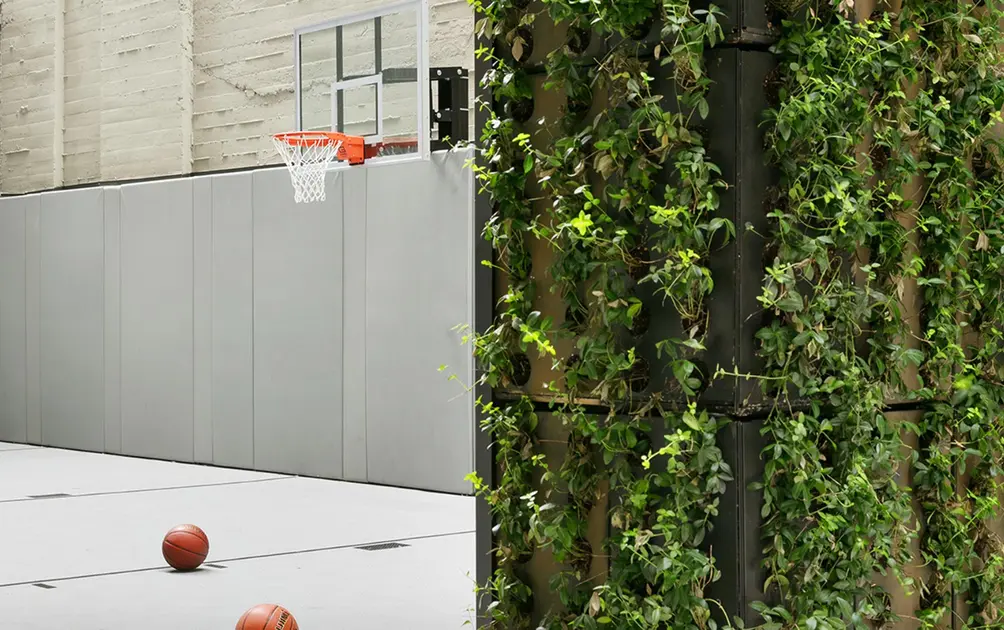 70 Charlton sport court via Evan Joseph
70 Charlton sport court via Evan Joseph
Extell’s 70 Charlton claims to be the “most amenitized” building in Hudson Square. Goldman says they look at the market, survey other offerings and find amenities that will make their buildings stand out. “This is why 70 Charlton has an indoor, three-lane saltwater pool and a sport court. Neither of these offerings are common to the neighborhood and we project they will be quite attractive to buyers.” And even though Extell’s 1010 Park Avenue has only 11 residences, it offers three floors of amenities. “Those amenities truly feel like a private club, an extension of the home.”
But how do developers know what their buyers’ want? Goldman says, “I am always talking to our Resident Managers to see what areas are getting utilized the most. I talk to my sales team and find out what is getting the best feedback. All of this informs not only how we should continue to utilize the space in the current building and the next building.”
Would you like to tour any of these properties?
Just complete the info below.
Or call us at (212) 755-5544
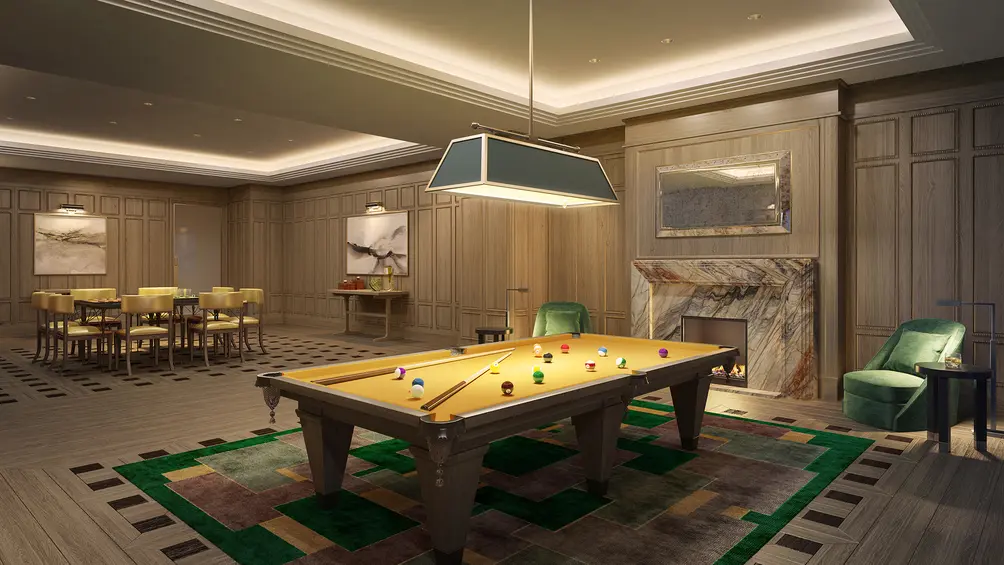 1010 Park Avenue lounge via Williams New York
1010 Park Avenue lounge via Williams New York
Matthew Messinger, President & Chief Executive Officer at Trinity Place Holdings, described their 90-unit development at 77 Greenwich as, “big enough for some economics of scale so we can offer great amenities and small enough to maintain that boutique feel where the doorman knows your kids’ names (and even your dog’s name)!” Just as Goldman described, Messinger concurs, “More than thinking through the range of perspective buyers, in 2005, a lot of developers went with the ‘kitschy’ amenities like the bowling alley and the rock climbing wall. But now, if you have a dead space, it’s not about gimmicks, it’s about spaces folks will really use.”
Messinger believes their perspective residential buyers will not think of the actual value proposition in terms of dollars and cents. “They’re real spaces and they wonder, ‘Can I get to use and integrate these amenities into my life, as a resident and a host.’”
Messinger believes their perspective residential buyers will not think of the actual value proposition in terms of dollars and cents. “They’re real spaces and they wonder, ‘Can I get to use and integrate these amenities into my life, as a resident and a host.’”
Similarly, Corcoran broker Jay Glazer commented, “Amenitized buildings are a lifestyle choice and, more importantly, a necessity in certain segments of the market.” Glazer explains that his buyers expect to pay more for buildings loaded with amenities, and if they make a conscious choice to live in highly amenitized buildings, they are willing to pay for the upgrades it brings to their daily lives. Glazer says, “If you don’t have the top amenities, you are not operating at the same level of everyone else.” He finds the top amenities his buyers look for are children’s playrooms, gyms, and roof decks, in that order.
 77 Greenwich roof terrace via Binyan Studios
77 Greenwich roof terrace via Binyan Studios
A building’s neighborhood greatly influences amenities. Messinger believed that incorporating a children’s space and a large outdoor area made the most sense for the family-friendly 77 Greenwich neighborhood. “With a new public pre-K nearby, family-friendly, easily accessible spaces make sense. Essentially, we have a park on the top of our building - a 4,500 square foot roof deck with a Future Green landscaped garden” and so much more. The building even has a ninth-floor, partially covered, 2,400-square-foot dog run with views of Trinity Church. Quite posh for the dog or his owner.
There are actual amenity valuation calculators that examine price differences for units based on their amenities. For example, a doorman can add up to 15% and unobstructed Central Park increase the price up to 50%. And, according to some calculators, fitness centers, to some a “bare minimum” expectation, only adds 5%.
Perhaps the real value of these common amenities is the community they foster. The New York Times recently ran an article titled “Human contact is now a luxury good.” Albeit extremely depressing, the article focuses on the growing reality of how technology is robbing us of face-to-face interaction and, therefore, our ability to interact. Common amenity spaces encourage interaction and, often, they are low-tech times to be with one another, in a pool, playing billiards or chatting while your dogs are playing. Seen in this light, successful amenities can be viewed as invaluable.
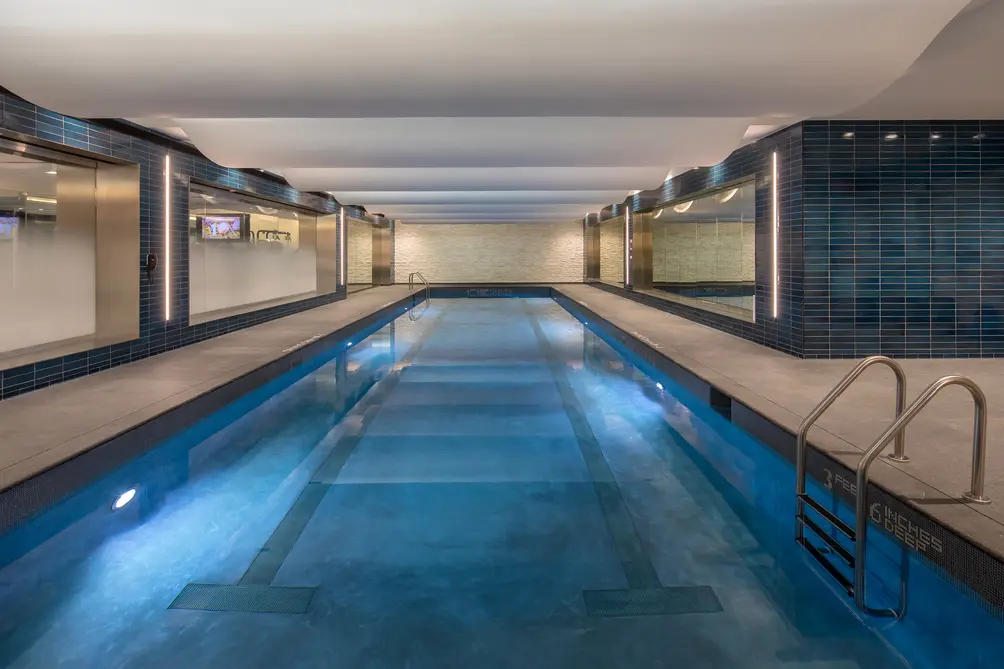 70 Charlton pool via Evan Joseph
70 Charlton pool via Evan Joseph
Would you like to tour any of these properties?
Just complete the info below.
Or call us at (212) 755-5544
Would you like to tour any of these properties?

Contributing Writer
Michelle Sinclair Colman
Michelle writes children's books and also writes articles about architecture, design and real estate. Those two passions came together in Michelle's first children's book, "Urban Babies Wear Black." Michelle has a Master's degree in Sociology from the University of Minnesota and a Master's degree in the Cities Program from the London School of Economics.

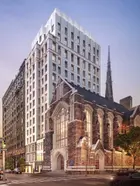
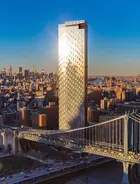
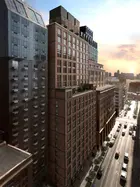
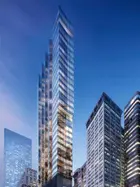
 6sqft delivers the latest on real estate, architecture, and design, straight from New York City.
6sqft delivers the latest on real estate, architecture, and design, straight from New York City.
